IK Multimedia iLoud Precision 6 review: is DSP the answer to our monitoring needs?
The iLoud Precision speakers bring digital brains to the analogue world of monitoring for the most accurate listening solution possible.
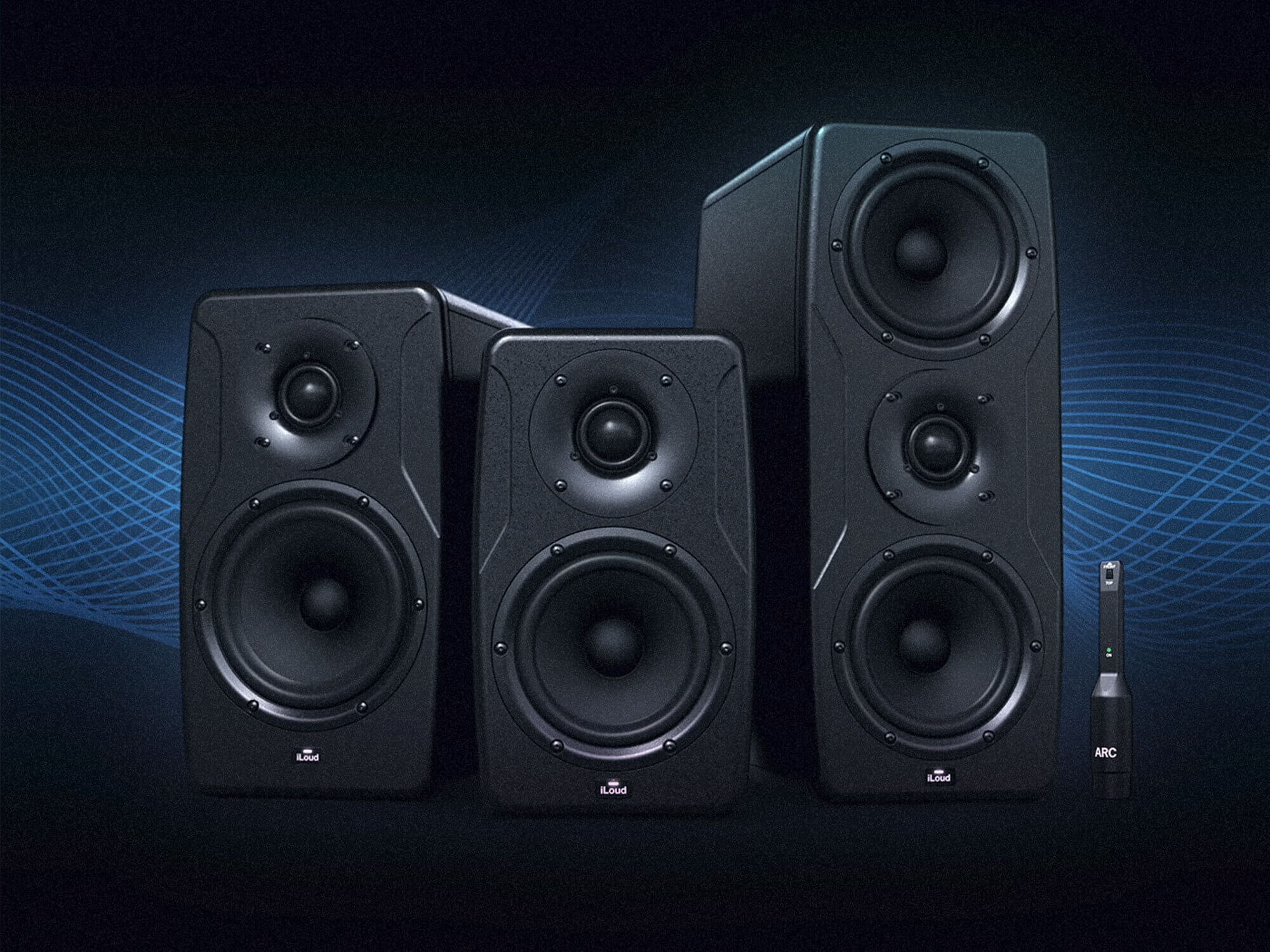
Image: via IK Multimedia
Review Overview
Our rating
8
Our verdict
⊕ A slim and lightweight build with rigidity where it counts
⊕ Solid off-axis frequency response
⊕ X-Monitor provides serious flexibility
⊖ It may take time to wade through the X-Monitor options to settle on your preferred setup
⊖ ARC calibration may need running a few times to get the required result
The iLoud Precision monitor range from IK Multimedia fully commits to the power of digital signap processing (DSP) to mitigate the analogue problems of crossovers, amplifiers, loudspeakers and, to a degree, room acoustics. In addition, the iLouds impressively emulate a vast range of monitor models, from studio mains to laptop speakers, giving you a wealth of resources for moulding and analysing mixes.
Their success rests not only on the quality of the monitoring, but also on preventing this wealth from overwhelming you with choice and complexity.
Light, slim and rigid
The Precision 6 monitors are unusually slim, their curved sides extending only a little further than the 6.5” (165mm) diameter of the woofer, and despite their lightness the enclosures are rigid and notably un-resonant. At the rear, below the bass reflex port, are the highpass and shelving filter controls, with associated LEDs, as well as buttons for calibration/DESK response and auto-standby.
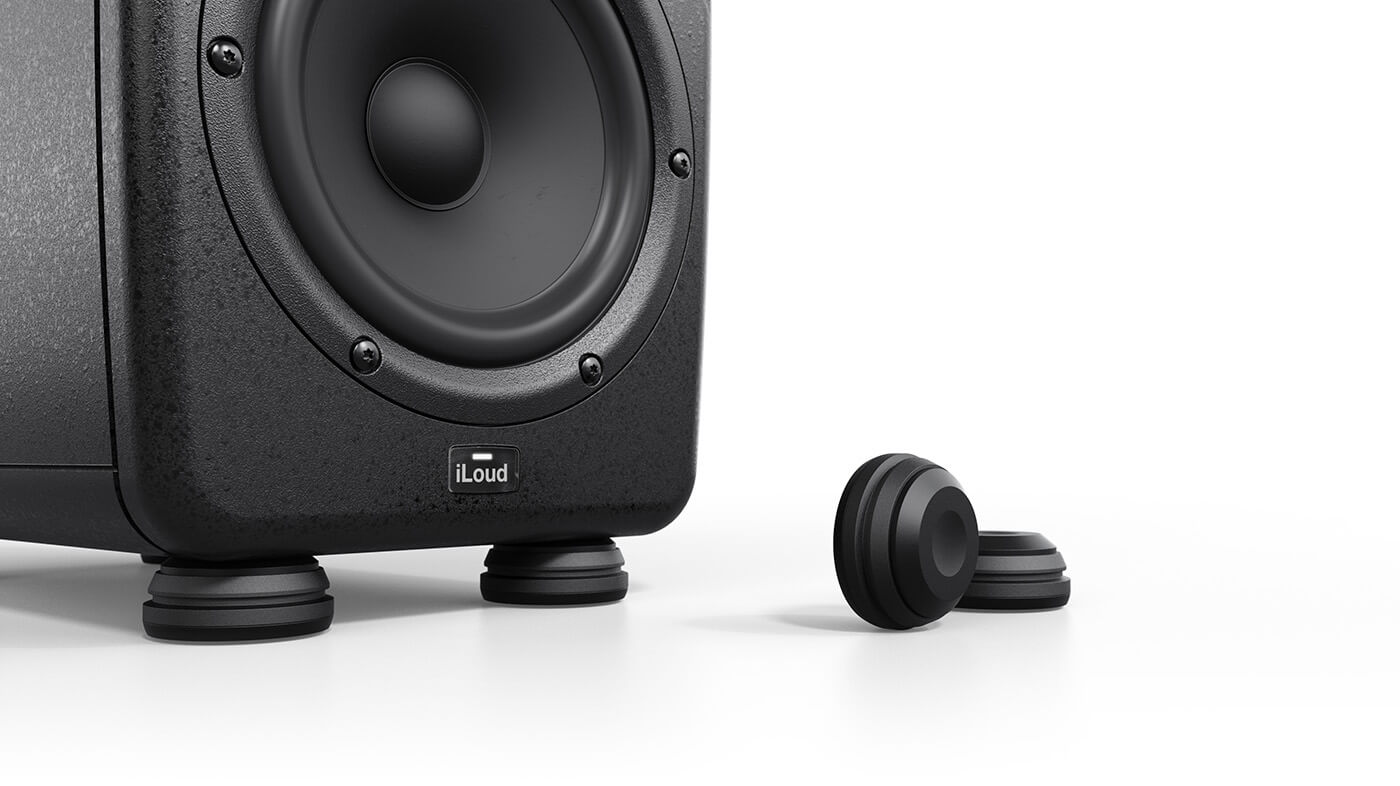
The DESK filter contours the response to compensate for flat surfaces extending below/in front of the monitor (i.e. mixing consoles and desktops), while the calibration setting engages the user calibration contour or the calibration process itself, which utilises IK Multimedia’s ARC system. An XLR socket below provides input for the supplied ARC microphone.
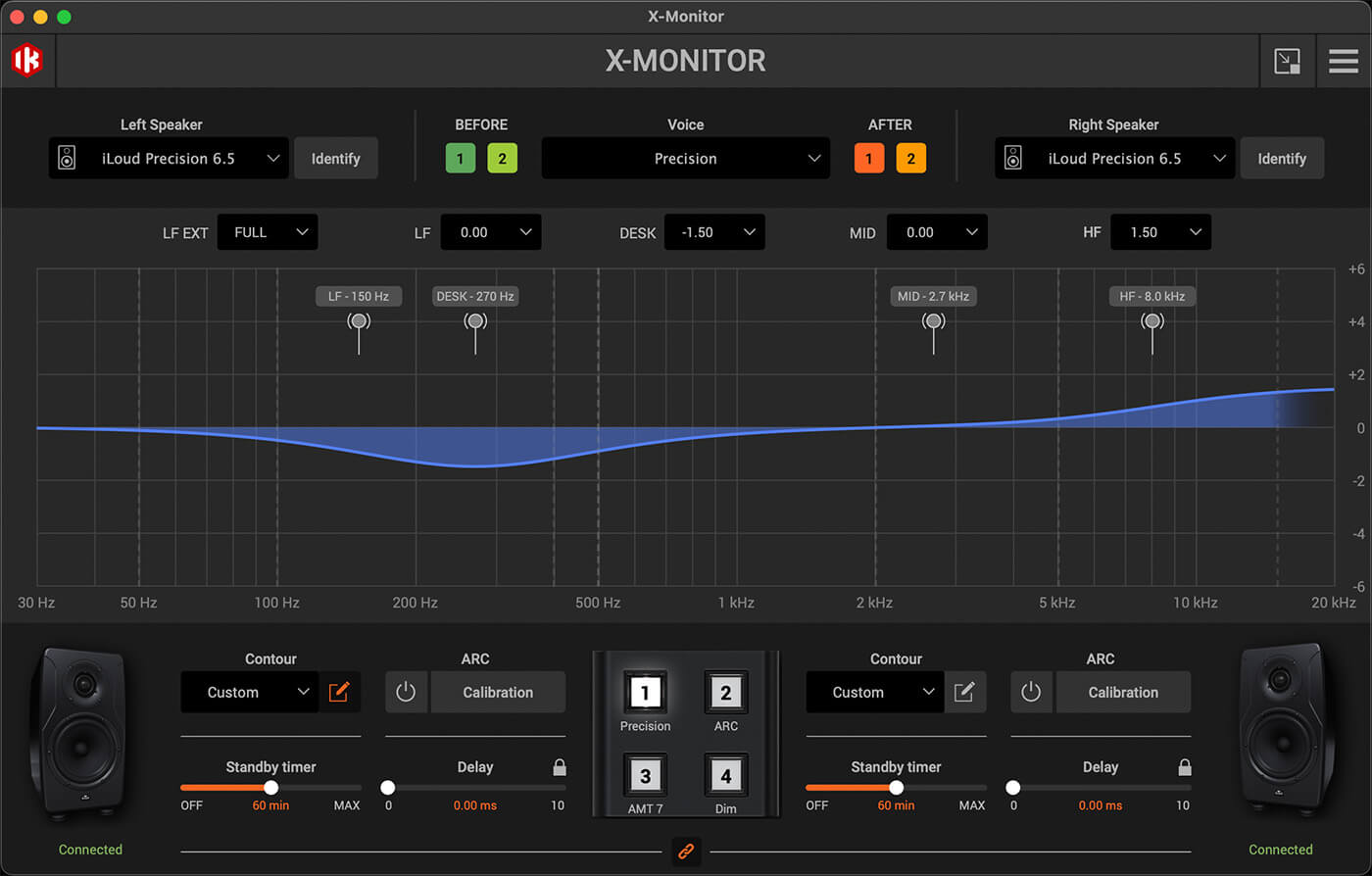
There’s plenty of monitor tailoring available on the rear panel, including calibrating via the ARC system, but the USB connection unlocks the potential of the iLoud Precisions with the X-Monitor app. Getting connected is simple – you just need to have as many free USB ports as they do iLoud Precision monitors (X-Monitor can be run through an external USB hub).
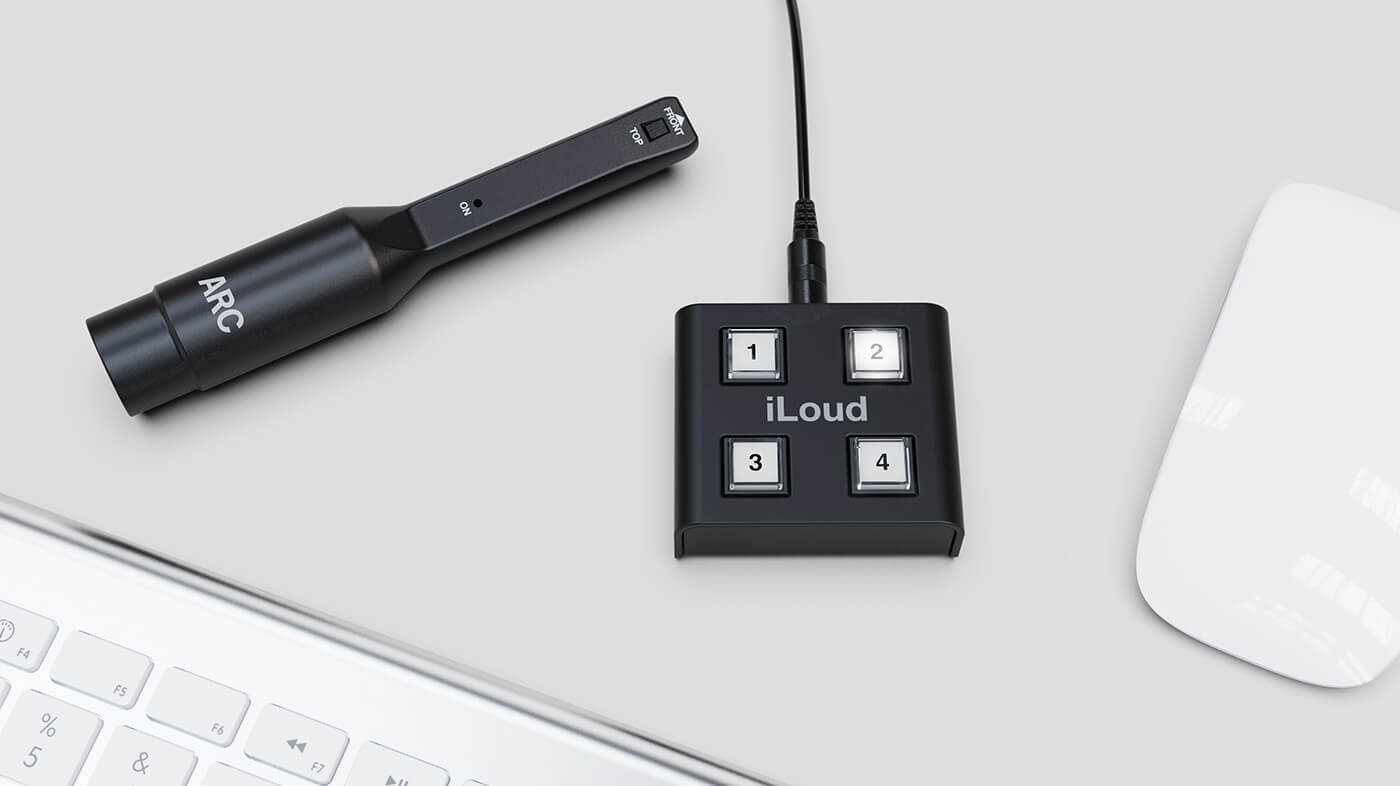
The app presents a wealth of options, which might overwhelm at first, but little time is needed to orient around the UI. Left and right speakers can be identified/addressed and their overall ‘Voice’ selected from a long list of basic behaviours (Precision, HF Presence, etc.) and a variety of studio monitors, HiFi speakers and multimedia devices.
This variety can seem unwieldy, as switching between more than a couple of different voicings tends to confuse rather than clarify, but the majority offer usable alternate windows into your mix. In practice a couple of favourites quickly jump out that can be returned to for a reliable A/B (possibly C) comparison.
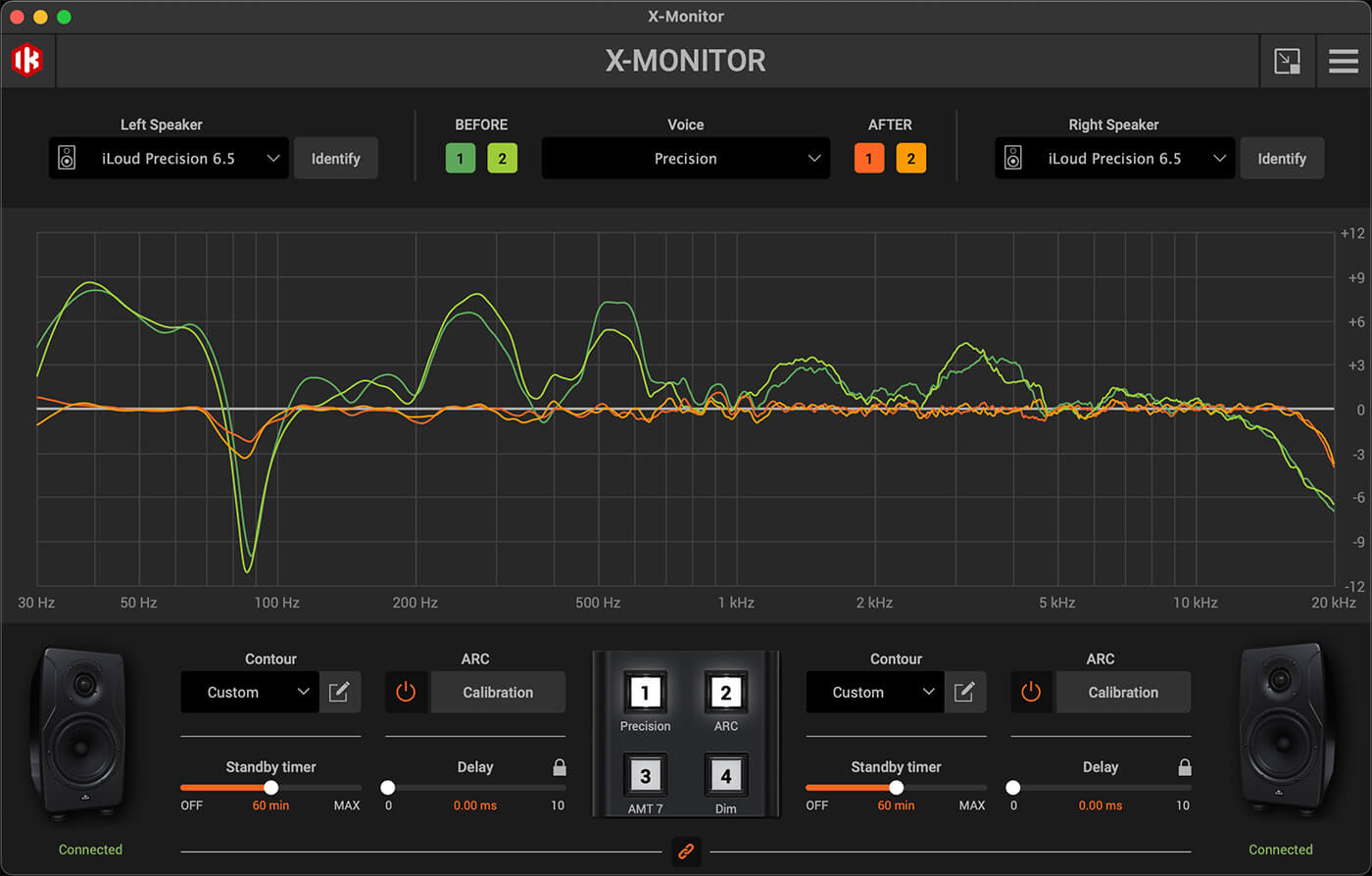
The app’s frequency response graphic shows the ARC measurements and the corrected output contours for each monitor, while the lower section covers fourteen additional contours (room size, wall proximity, etc.), calibration toggling/setup, power standby timings and a delay of up to 10ms.
Between these controls is a graphical representation of the optional four button X-Monitor remote control which can be programmed to switch between voicings, engage the ARC contour and mute/dim the speakers. The remote can be run in virtual form as a minimised window, but the actual unit is worth investing in for switching as well as aiding the calibration process.
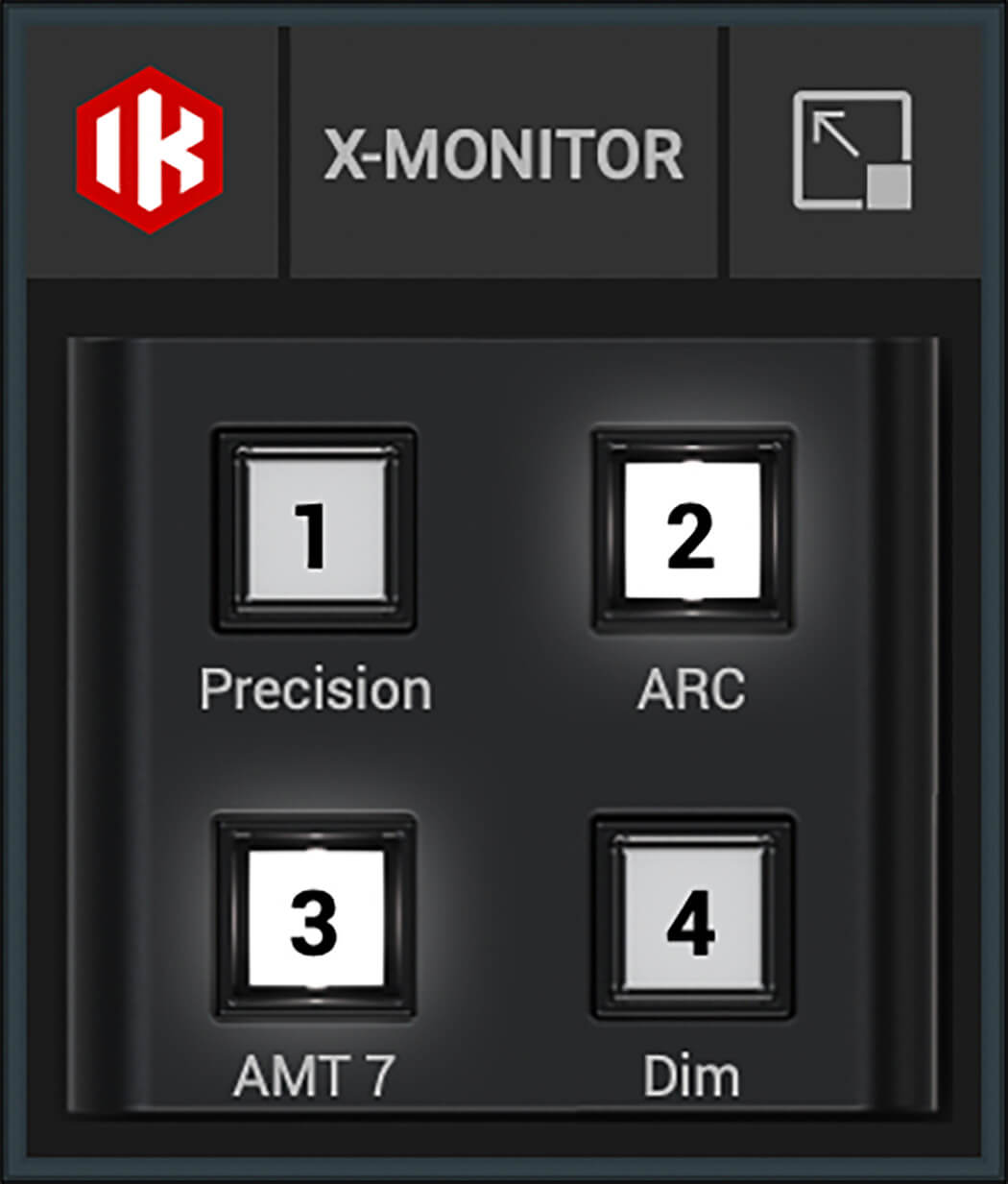
iLoud Brains
None of this is possible without the DSP brains of the iLoud Precision 6s, the main purpose of which is to utilise linear phase time alignment, unavailable in the analogue domain. By time aligning (phase shifting) across the frequency spectrum the accuracy of speaker driver outputs can be greatly improved, especially around the crucial crossover point (1.9kHz in this case). This would be pointless if the mechanical and acoustic properties of the Precision 6s were not capable of projecting a high audio quality in the first place. This quality is apparent from the moment the iLouds are switched on; their performance sounds tight and detailed with no discernable over-ring or audio blurring.
The low end is heavier than expected and the low mids a little too forward, but room acoustics make this a less than objective assessment. Compensation is quickly achieved with the rear panel controls, but a more comprehensive adjustment is provided by X-Monitor.
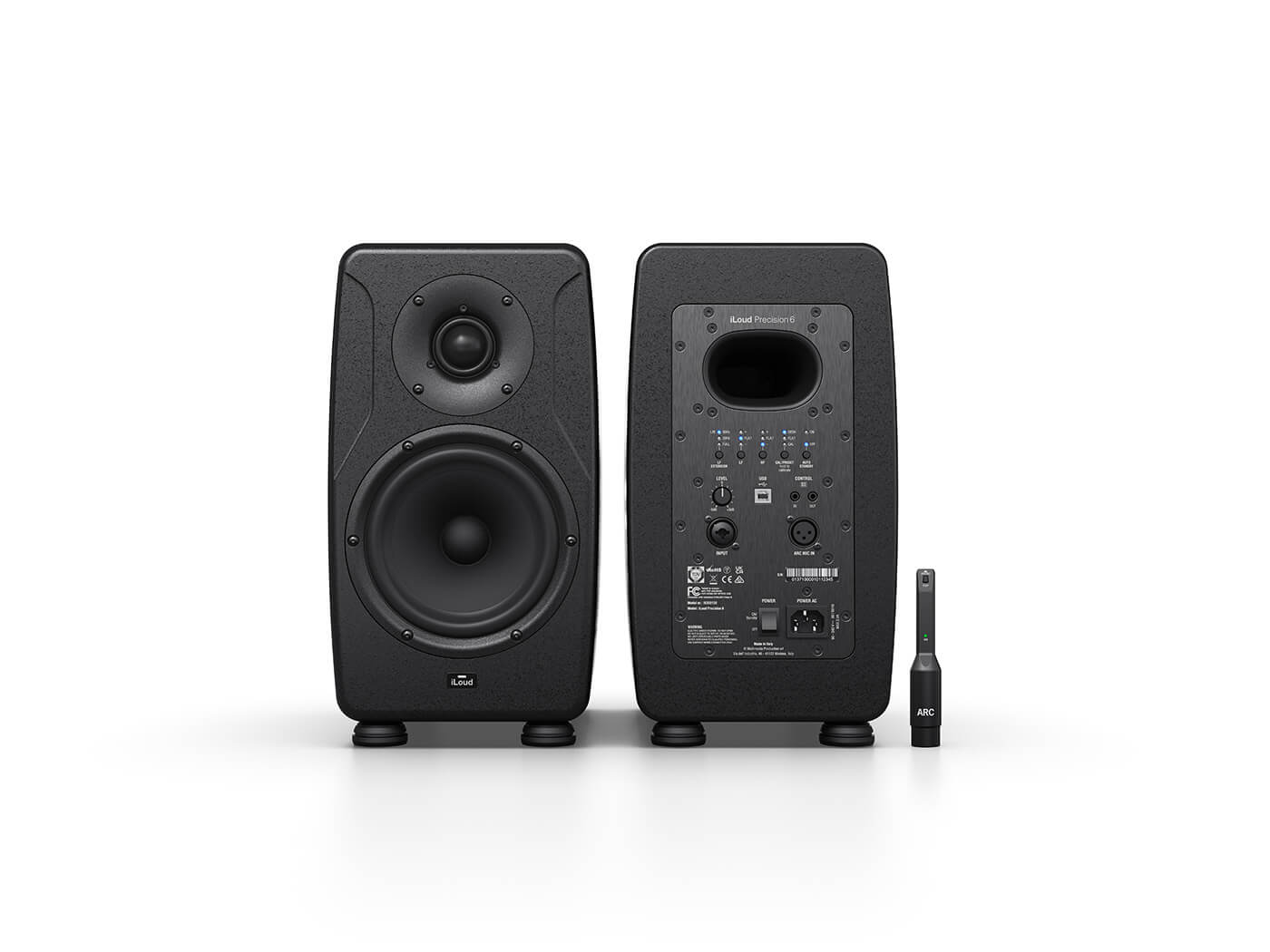
A well-tempered response
It proves quick to settle into a well tempered frequency response for the room, allowing the Precision 6s to impress across a range of sources, from mastered mixes to tracked components. The detail is all there, from top to bottom, and they make short work of surgical EQ tasks as well as broad treatment of instruments in a mix, alleviating the need to double check via solo (often a last resort in mixing).
Kick and bass punch is not hampered or damped down, and the critical transients are easily identified even in a dense mix. The axial response is excellent: the centre image remains solidly in place as you move off axis, and the frequency response, and therefore the stereo image, holds together remarkably well around the room. On the power side of things there is plenty on tap for most small-medium rooms, though if a contour compensation involves hefty low end lifts then the available grunt won’t go as far as the default profile. As a side note, the Class D amplification means these powered nearfields run cool, which means energy efficiency.
All aboard the ARC
The onboard ARC calibration is simple to run – just a mic cable and stand are required for the bundled ARC microphone. After a few minutes of mic moves and speaker chirps the process is over and a frequency response map is presented on X-Monitor with before/after contours for the compensation EQ.
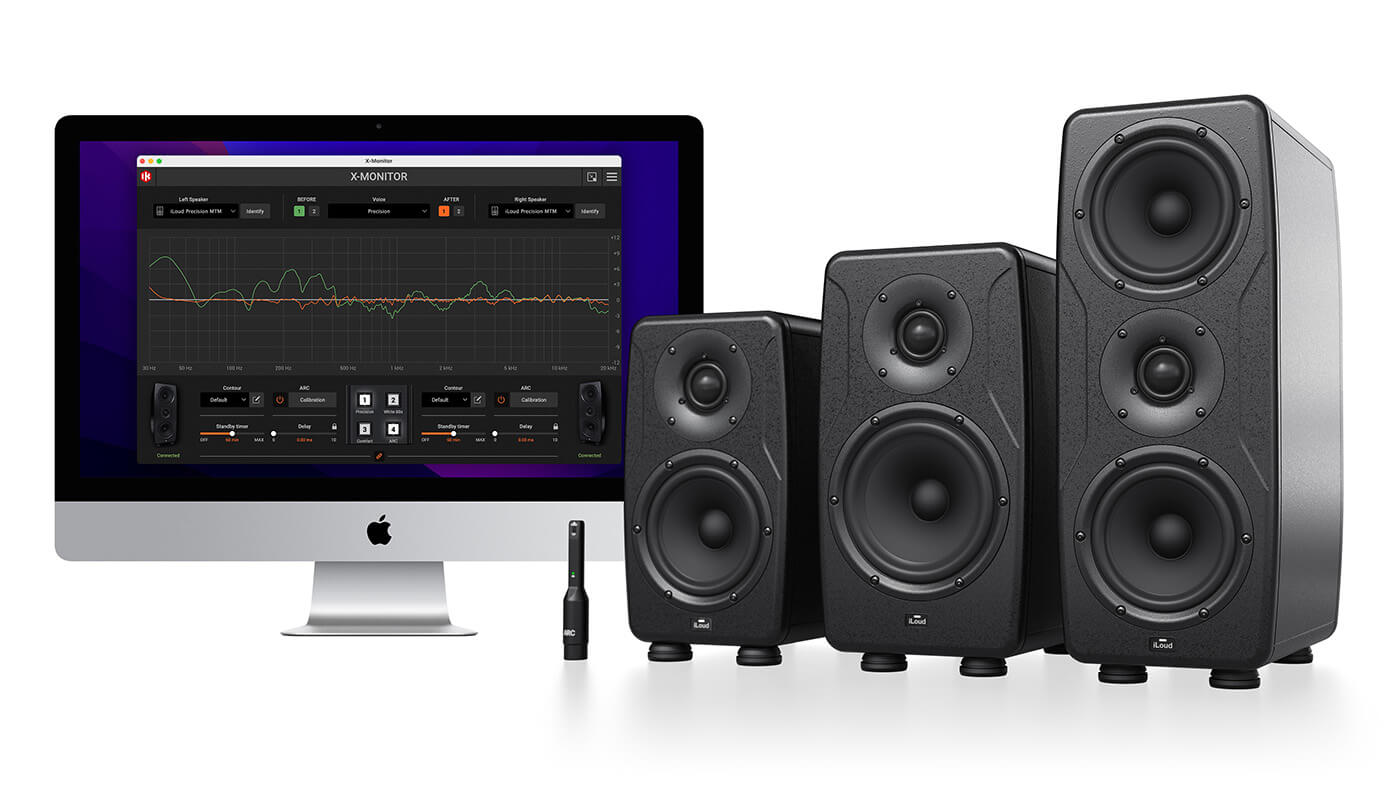
The process may be simple, but in practice it can produce two different contours for left and right that, when combined, create a pinched, warped centre image in the stereo field. Setting up both ARC mics on a single stand to restrict movements to back/forth during calibration can garner more coherent mappings for a solid stereo field centre, as can keeping the mic in one central spot at the cost os a little less high frequency compensation accuracy.
The sheer computational power of DSP, as well as its cost/energy efficiency advantage over analogue, mean it will increasingly become utilised in monitoring (e.g. ADAM’s new A range), from budget models to the studio high end. IK Multimedia have produced a monitor that commands a professional, though not particularly high, price for a professional and uniquely flexible sound. The ARC process and results may not be for everyone, but with some experimentation and familiarity its real power can be harnessed. The deep functionality of X-Monitor in combination with the actual raw quality of the iLoud Precision 6s makes this a serious monitoring package for producers, mixers, musicians and sound designers alike.
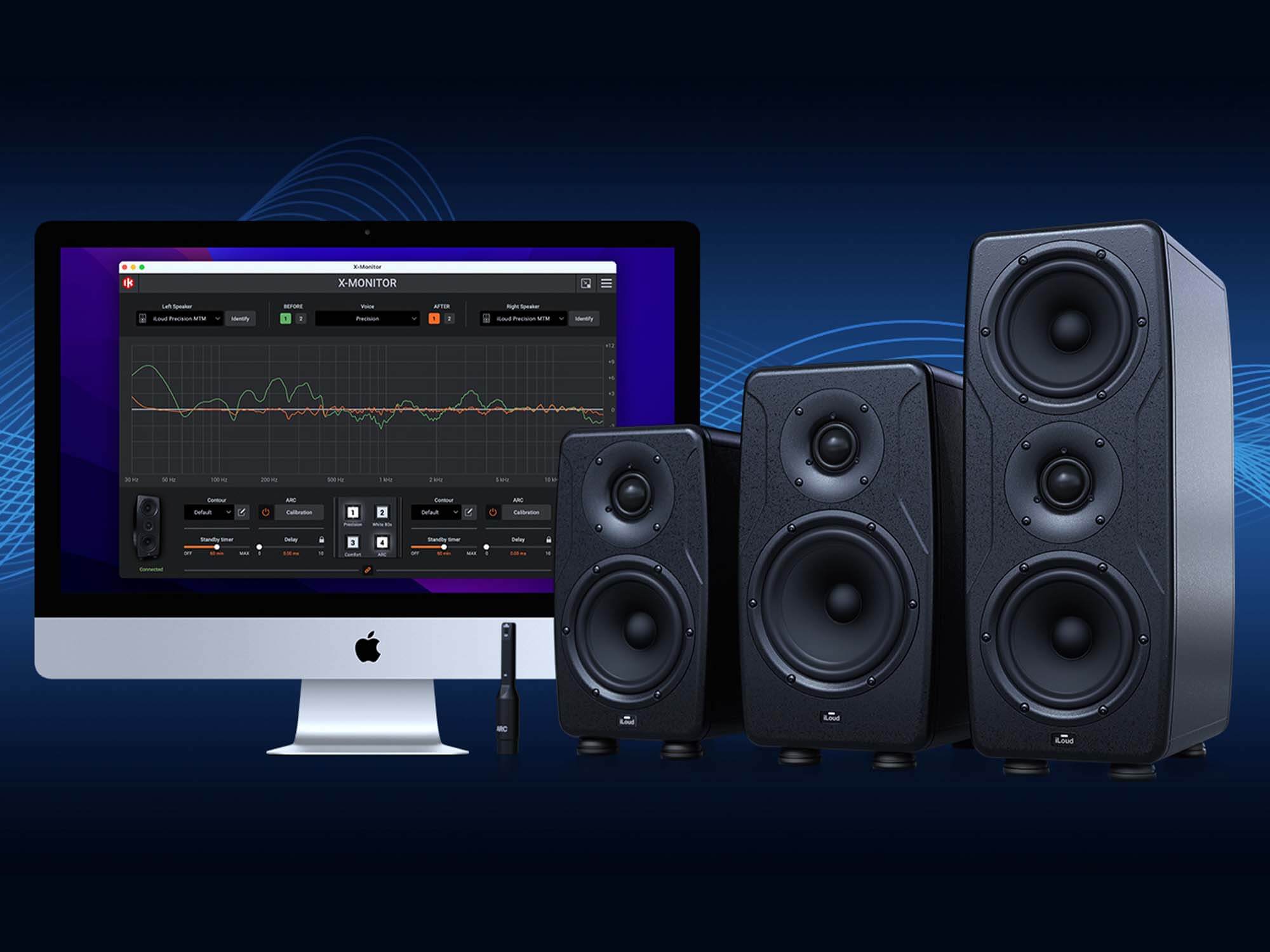
Reference Tracks:
- Miles Davis – Mile Runs The Voodoo Down (Bitches Brew) – The quality of the instruments, musicianship and recording from these era-defining sessions is rendered effortlessly. Nothing is lost, masked or buried as the players dance around the rooted, hard panned electric bass.
- Kendrick Lamar – Alright (To Pimp A Butterfly) – The 808 bass stays even without pulling the kick drum’s punches. At volume Lamar’s vocal stays front and centre with the hissy hats, snare snap, BVs and sax all remaining clear and present even as the bottom end dominates the iLoud amplification. Turning it right down doesn’t kill off that all important low end, so you miss nothing but the chest thump.
- Nick Cave & The Bad Seeds – Jubilee Street (Push The Sky Away) – Nick Launay’s exquisite production loses nothing on its journey through the iLoud Precision 6s as the track steadily builds to its lush peak, violin layers and children’s choir soaring over a swaggering Bad Seeds. The drier front end is a joy to listen in to, from the drum room and amp buzz to Cave’s vocal captured in pristine detail by a Neumann M49.
Key Features
- Configuration: 2-way rear ported with 6.5” (16.5cm) ultralight coated paper woofer and 1.5” (38mm) chambered textile dome tweeter
- Frequency Response: 45Hz to 30kHz ±1dB, 37Hz low frequency extension -4dB
- Internal AD/DA: 96kHz, 24bit
- Total Latency: 2.5ms
- Amplifiers: 120W (LF) & 30W (HF) Class-D
- Rear Panel Filters: HPF (35,50,65,80 Hz), LF shelving, DESK contour, HF shelving
- Calibration via ARC microphone (included) and X-Monitor app (USB)
- €999.99 each, €69.99 for iLoud Precision Remote Controller
- Contact IK Multimedia
- Buy: Andertons, Gear4music